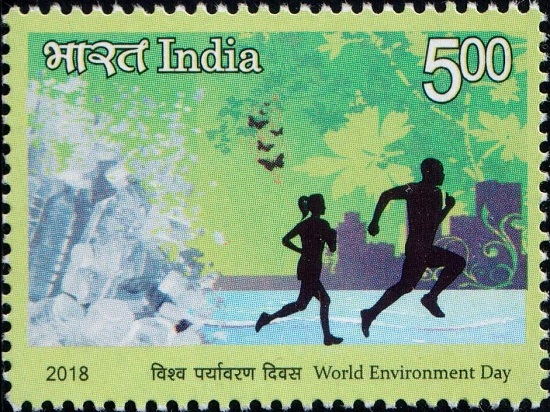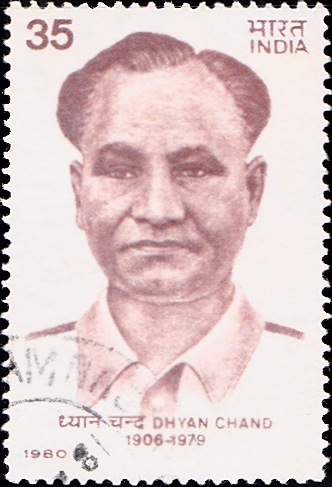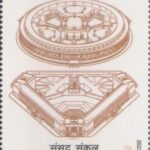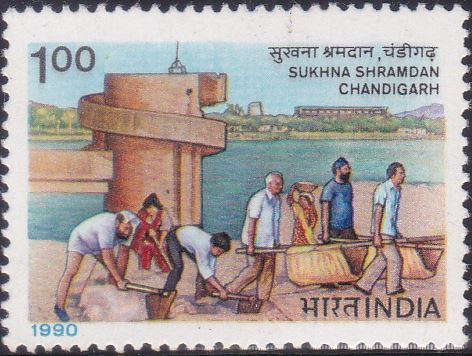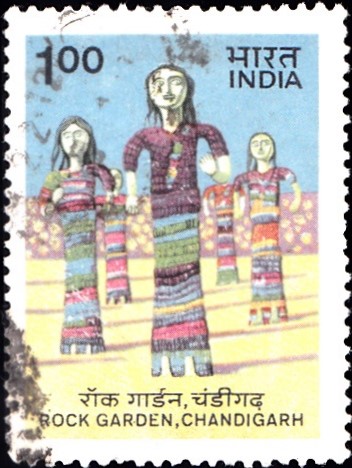
Rock Garden, Chandigarh
A commemorative postage stamp on the Nek Chand‘s Rock Garden of Chandigarh, India :
 Issued by India
Issued by India
Issued on Sep 23, 1983
Description of Designs : The stamp, designed by India Security Press, Nasik, shows a view of the Garden. Transparencies used in designing the stamp and first day cover were obtained through the courtesy of the Union Territory of Chandigarh. Cancellation has been designed by Alka Sharma.
Type : Stamp, Postal Used
Colour : Multicolour
Denomination : 100 Paise
Overall size : 3.91 x 2.90 cms.
Printing size : 3.55 x 2.54 cms.
Perforation : 13 x 13
Paper : Unwatermarked adhesive stamp paper
Number printed : 15,00,000
Number per issue sheet : 35
Printing process : Photogravure
Printed at : India Security Press
About :
- Millions of people from all over India and abroad have visited the Rock Garden. This marvel of art in Chandigarh has been shaped out of urban waste by Nek Chand who has shot into fame for this unusual creative endeavour.
- Chandigarh was planned by Le Corbusier in the early fifties as the new capital of the State of Punjab following the partition of India. Twenty-three years ago, Nek Chand, a road Inspector, was constructing and supervising roads for the new city. The artist in him discovered, in the building and industrial waste of the city, a novel resource for creativity in the form of a rock garden which now stands as a testimony to his genius. The Rock Garden is a unique example of what can be done with discarded material. He first started collecting waste materials such as broken crockery, fused fluorescent tubes, glass bangles, feathers and gravel. He salvaged building material from debris, collected natural stone sculptures and also recovered material in the form of potted plants discarded by the inhabitants of the city. His plant-nursery may well be the envy of accomplished horticulturists both in terms of its size and the variety of plants it houses. The Rock Garden is carved out of the tributaries of a seasonal stream which flowed during monsoon deep inside a forest towards South-East of the Corbusier‘s monumental Capital Complex in Sector 1 of the “City Beautiful“.
- With its sharp ups and downs, humps and hollows, the site suggested to him an exciting creative possibility. Because of its idyllic setting, it was most suitable for the work Nek Chand wanted to do in privacy.
- Surrounded by a cemented wall fabricated from discarded coal tar drums, the Rock Garden covers an area of three to four acres. The topography of the land has been imaginatively exploited to enhance the dramatic element inherent in the locale. The Rock Garden is an assemblage of several chambers, each fulfilling a specific function. Trees and shrubs, native to the environment, have been carefully positioned to complement the contents of each chamber.
- The different chambers open into one another through a series of low arches which dramatically unfold the varied architectural experience. Each chamber portrays a different aspect of Nek Chand’s dream kingdom, featuring animals, birds and human beings. In this way, not only the visual impact of the hundreds of different animals, birds and human beings is an art force in itself, but also the dress and accoutrements of the servants, grooms, queens, warriors and artists represent a factual record of the customs and dress of the people from this part of India.
- Tributes have been recorded by hundreds of distinguished visitors in the ‘comments book’ maintained at the Rock Garden. These charmed viewers have spread the contagion of their enchantments to others, thus building up Nek Chand’s reputation quickly. But the first significant recognition of his work so far has come from Paris. The highest distinction that the Municipality of Paris can bestow on anyone has been conferred on Nek Chand. The Mayor of Paris bestowed on him the “Grand Medaille de Vermeil” for his exhibition in Paris in March-April, 1980.
- (Text by courtesy : S. S. Bhatti, Principal, Architecture College, Chandigarh).


